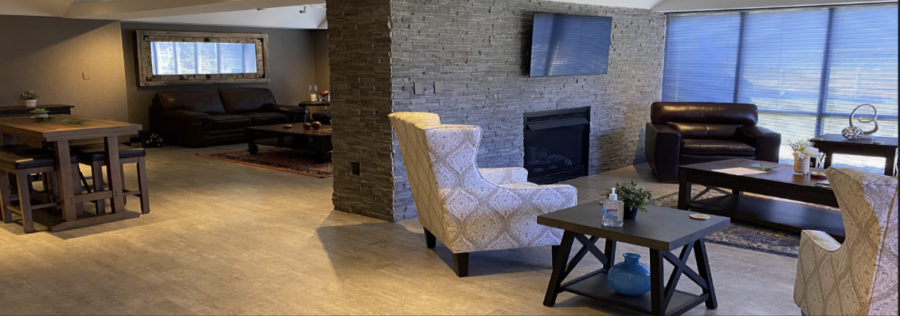Analyzing the Impact of Viking Firearms and Training Facility
Exploring the impact of EL’s Viking Firearms and Training facility
As gun violence increases in America, there is a tendency for some to question the necessity of anything firearm-related in their community. On the other hand, some believe that proper gun training is what keeps violence rates low. These clashing opinions have spurred arguments in EL with the opening of the Viking Firearms and Training (VFT) facility earlier this year.
Spanning a whopping 40,000 square feet and located half a mile away from East Lyme Middle School, the VFT was founded by EL Police Department detective Mark Comeau, Niantic Sportsman Club president Matthew Fleisher, and local businessman Jas Awla.
Their vision was to provide people with an experience where they could virtually fire guns without using live ammunition.
Using laser technology in tandem with an 8-by-12 foot screen, people over 16 years old (or younger with parental supervision) can use the simulations to experience what it’s like to fire handguns, rifles, and shotguns.
The facility offers two options for shooting.
The first provides users virtual shooting without the recoil and feel of an actual gun. The second uses carbon dioxide-filled magazines to allow users to get the same recoil, feel, and sound of the gun that they are using. Customers can also choose between a variety of target practice simulations.
Proponents Take:
According to the owners, safety is the top priority of the facility. Two large metal detectors and workers monitor that no outside weapons get inside the building. In addition to this, no alcohol is sold or allowed on the premises. The owners enforce that customers act responsibly while shooting. No horseplay is allowed; the guns are essentially
treated as if they could fire live rounds.
The owners also work hard to cultivate an environment in the facility that is welcoming and non- intimidating.
“The company is great. It’s run by great people who are very knowledgeable in guns and how to handle them safely,” senior and worker at the VFT Spencer Sherman said.
“Everyone there strives to help and provide a judgment free zone.”
Aside from entertainment, the facility is also designed to provide next-level training for EL law enforcement. Officers are able to train in a variety of situations that prepare for whatever they might encounter while on duty.
“We want to bring in law enforcement because we don’t feel that they get enough training,” Mr. Comeau said. “I want to get them engaged so that they come here regularly and keep up with scenario- based training.”
Opponents Take:
Since the plan for the building was announced, however, there has been pushback by citizens who feel the facility might be destructive. Before the project was greenlit by the zoning commission, a public hearing was held against the concept. Gary Pivo, one of the speakers at the hearing, is a professor at the University of Arizona, and has his PhD in City and Regional Planning.
He feels strongly that the business can have multiple negative effects on the community.
“The reason that I spoke against the permit at the zoning hearing was that there’s a concern that it’s going to increase potentially the level of aggression in violence, among both young adult and teenage people, who participate in the type of recreation that’s offered there,” Mr. Pivo said.
Mr. Pivo explained that one of these effects could be a decrease in desirability to live in the town. He feels that an increase in commercial gun activity could build a reputation for EL that revolves around gun culture, and adversely decrease the property values of the town. He also talked about how he feels it might affect the school system
in EL.
“Generally, the increase in aggressive behavior as a way of dealing with conflict rather than a more peaceful way could affect how kids interact in the community,” Mr. Pivo said.
Your donation will support the student journalists of East Lyme High School. Your contribution will allow us to purchase equipment and cover our annual website hosting costs.

